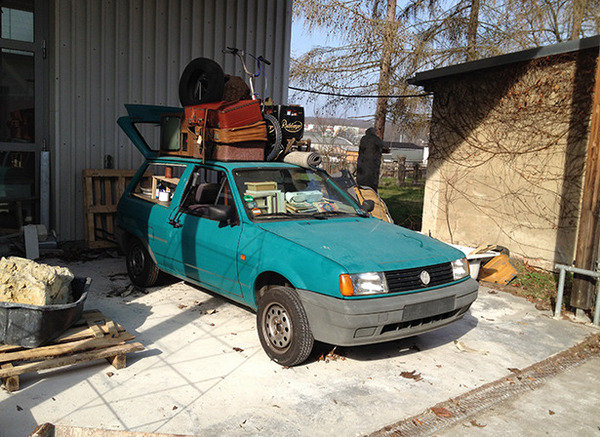Dispossession
dal 8/5/2015 al 21/11/2015
Segnalato da
Manaf Halbouni
Susanne Keichel
Thomas Kilpper
Massimo Ricciardo
Holger Wust
Szymon Kobylarz
Michael Merkel
Dorota Nieznalska
Tomasz Opania
The Open Group
Andriy Sahaydakovsky
Oksana Zabuzhko
Michał Bieniek
Małgorzata Misniakiewicz
8/5/2015
Dispossession
Signum Foundation - Palazzo Dona', Venezia
Una mostra di installazioni a cui parteciperanno artisti provenienti da Germania, Ucraina e naturalmente Polonia, per raccontare la storia dei profughi di Breslavia nel Dopoguerra.

Curated by: Michał Bieniek, Małgorzata Miśniakiewicz
European Capital of Culture Wrocław 2016 is proud to announce Dispossession, an official collateral event of the 56th Venice Biennale. The exhibition, which will take place in the Palazzo Doná Brusa on Campo San Polo, is one of the first international projects of the next year's cultural capital of Europe and announces Wrocław's cooperation with Dresden and Lviv. Taking as its departure point the city's history of displacements, the exhibition intertwines historic and contemporary dimension of dispossession.
Before the War, Wrocław—then Breslau—was one of the biggest German cities with population around
600,000 people, only a small fraction them speaking Polish. Most of the civilians were forced to leave following Hitler's order of turning the city into a fortress in the end of the War. Thousands died during the journey westward, many more reached Dresden, which had become haven to over one million refugees before it was bombed by Allies a few weeks later. The reshaping of European borders agreed during the Potsdam conference meant that newly renamed Wrocław was to a large extent populated by Poles arriving from the Eastern Borderlands that had become part of the USSR.
A historical axis of displacements—Lviv-Wroclaw-Dresden—sketched out here outlines the exhibition's field of research when thinking about contemporary migration. In February this year number of people displaced as a result of the conflict in Eastern Ukraine reached one million. Dispossession is an everyday event in a supposedly peaceful European Union. Each day hundreds of people embark on a precarious journey through the Mediterranean to reach its north shore in an attempt to escape wars, poverty, humiliation and hunger. All of them abandon their homes with recognition that they might never return or might have nothing to return to.
It is the notion of the home that guides this exhibition, both in relation to its symbolic and spatial meaning. A home that is lost and a house that needs to be occupied. Dispossession does not mean only depriving somebody of their property, but also pertains to freeing from evil spirits, an exorcism that is meant to oust unwanted energies. The exhibition is guided by the recognition of a universal and atemporal dimension of dispossession in its psychological and material manifestations. It is in this lost and sought sense of belonging that we analyse a multi-layered relationship between space and identity.
Image: Manaf Halbouni, Nowhere is home (work in progress image), 2015. Mixed media, 140 x 140 x 340 cm. Photo: Manaf Halbouni
Press Conact: Wiola Samborska, wiola.samborska@wroclaw2016.pl
May 9–November 22, 2015
Palazzo Doná Brusa
Campo San Polo 2177
Venice



